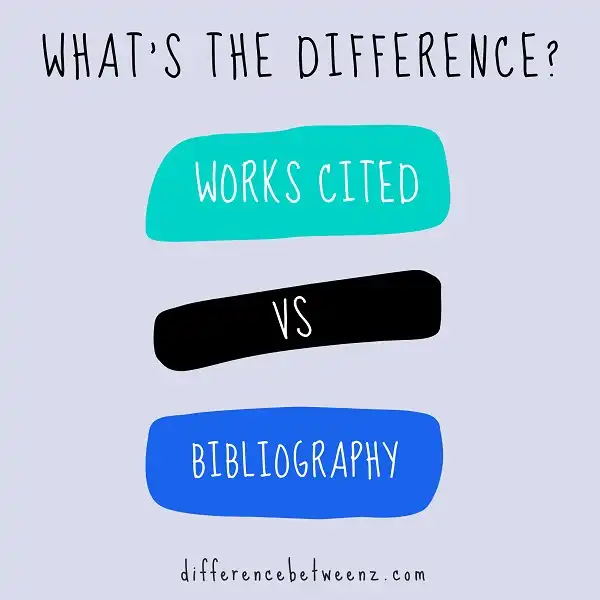The terms “works cited” and “bibliography” are often used interchangeably, but they have different meanings. Works cited list contains the sources you used in your paper, while a bibliography lists all of the sources you consulted, even if you didn’t use them in your paper.
What is Work Cited?
Work Cited, also known as a Works Cited page or reference list, is a list of all the sources that have been referenced in an academic paper or another type of written document. The purpose of this list is to provide readers with a complete overview of the research that has gone into creating the document, thereby allowing them to review and analyze the sources independently. In order to compile a proper Work Cited, it is crucial to carefully source each individual piece of information used in the text and provide full details about each source. This includes author name(s), title, publication date and location, and any other relevant information. Once these pieces of information have been included in the text’s bibliography or reference list, they can then be cited in Work Cited. Typically presented in alphabetical order, it can take many forms, depending on the style guide used by the writer or researcher. Regardless of its appearance, however, a solid Works Cited can make a significant contribution to any academic writing project.
What is Bibliography?
The bibliography is the practice of documenting sources used in academic research. It is common in research papers and dissertations, and it can also be used in other writing genres such as essays, lab reports, and case studies. Bibliographies generally include the author’s name, the title of the work, the publication date, and other relevant information such as the page number or URL. Bibliographies can be either in-text or end-of-text, depending on the style guide being used. In-text bibliographies are typically shorter and only include the essential information needed to identify the source. End-of-text bibliographies are more comprehensive and include all of the information that would be found in an in-text bibliography, as well as additional information such as abstracts and annotations. Bibliographies are an important part of academic writing because they provide a way for readers to further explore the sources used in a piece of writing. In addition, bibliographies show that a writer has carefully researched their topic and considered a variety of sources.
Difference between Works Cited and Bibliography
When conducting research for a paper, it is important to keep track of the sources that you consulted in order to create your Works Cited or Bibliography. Both Works Cited and Bibliography are lists of sources that you used, but there is an important distinction between the two. A Works Cited list includes ONLY those sources that you directly cite in your paper. A Bibliography, on the other hand, includes ALL of the sources that you consulted in your research, whether you cite them or not. For example, if you are writing a paper about the history of the automobile, your Bibliography might include books about the history of transportation, articles about the industrial revolution, and websites about the car culture. However, if you only actually cite information from a few of those sources in your paper, then those would be the only ones listed in your Works Cited. It is important to consult with your instructor to find out which type of list they require for your assignment.
Conclusion
A bibliography is a list of all the sources that were consulted when writing a paper. Works cited is a specific section within the body of a research paper that lists only the works that have been directly referenced. There are different formatting styles for both works cited and bibliography, so be sure to consult with your instructor or reference guide for specific instructions. When it comes to citing sources, it’s important to be as accurate and complete as possible.


